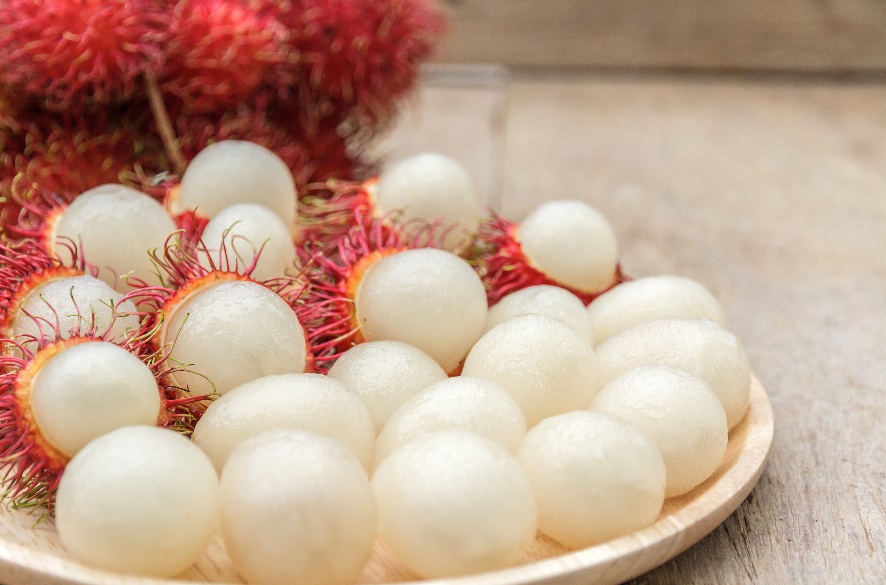CASE STUDY 3: Rambutan
BASF’s Rambutan programme aims to create renewable raw materials from sustainable sources. High-quality active substances to produce cosmetics are obtained from previously unused parts of a plant called rambutan.
One of the pillars of the circular economy are renewable raw materials obtained from sustainable sources. There is a constant search for new renewable raw materials, for example plant-based ones, that could replace non-renewable raw materials. In addition, it is important to obtain them sustainably, i.e., by building new, sustainable supply chains.
BASF researchers are always looking for useful active ingredients in nature – for example, in plant bark, leaves, roots, seeds and fruits. They analyse thousands of samples every year. That is how they discovered the substances contained in rambutan (Nephelium lappaceum) – a tree whose fruit closely resemble lychee. BASF scientists have determined that the liquid extract of the leaves of this tree has an activating effect on various genes of human skin and supports the production of collagen. In addition, active ingredients from the peel and grains of the rambutan fruit have a beneficial effect consisting in better skin hydration and stimulating hair roots.
BASF has found a way to use not only the juicy fruit, but also the skin, leaves and seeds, so that no part of the plant is wasted.
In pursuit of sustainable sources of cosmetic ingredients, BASF scientists built a socially and environmentally responsible supply chain in cooperation with local partners from Vietnam and launched cultivation in the first two organic rambutan gardens in Vietnam. This programme allows workers to earn above-average incomes, offers them health insurance and provides safer working conditions. As a result, the rambutan superfruit benefits not only consumers, but also workers and local wildlife.

Source: https://pl.freepik.com/

 Español
Español Turkish
Turkish български
български Magyar
Magyar Polski
Polski Português
Português